In the present health-conscious era of evolving health and wellness trends, our dietary choices play a role in our physical and mental well-being. Among these, yeast, a staple in various culinary choices, is valued for its flavor and leavening capabilities. But what about its types and their health benefits?
Today, we analyze the contrasting differences between the two most common types of yeast. Beyond the flavor-enhancing skills of nutritional yeast and the leavening abilities of active dry yeast, we shift our focus to the nutritional differences between the two to understand their role in our health.
What is nutritional yeast?
Nutritional yeast- golden powdery fish-like flakes known as Nooch, is a common food ingredient in vegan pantries. It is derived from a deactivated yeast strain of one of the most popular species saccharomyces cerevisiae, a single-celled fungus used in winemaking, baking, and brewing.
Nutritional yeast has gained popularity in the past few years and can be located in almost every grocery store around the block. It is the principal factor of adding umami flavor to the dishes, known as a pleasant and savory taste.
Nutritional yeast imparts cheesy flavor to the recipes and takes on the role of parmesan by sprinkling on pasta, popcorn, and risotto and incorporating it into sauces for a savory taste. However, it is not considered ideal for baking as it is a deactivated strain and, therefore, cannot cause leavening. Nutritional yeast is popular among vegans and vegetarians due to its high protein, fiber, and vitamin B complex content.
What is active dry yeast?
Active dry yeast is the most common yeast variety available in grocery stores. It is the dried and granular yeast made from the unicellular dehydrated microorganism Saccharomyces cerevisiae, which requires activation before adding in dry ingredients. Upon rehydrating, it consumes the sugar and starch content in the dough recipes and produces carbon dioxide and alcohol leading to the dough rise that imparts a distinct taste.
Active dry yeast is an easy-to-use and preferred ingredient of all types of bakers that requires a very short rehydration time where it is mixed with a liquid before its addition to the dry ingredients.
Difference between nutritional yeast and active dry yeast:
The similarities between the two merely extend to the “yeast” in their names. They cannot be used interchangeably as the results they produce are distinct. Nutritional yeast is a plant-based deactivated strain, used to thicken sauces and soups or sprinkled on many dishes and is not a replacement for active yeast. On the other hand, deactivated dry yeast is used in baking as a leavening agent that raises the bread and adds fluff to it.
Another main difference between the two yeasts is that nutritional yeast comes as flakes or powder, whereas active yeast is available in the grocery store in small granules or pellets packed in packets or jars.
They differ from each other in terms of their processing as well. Nutritional yeast is prepared by culturing, deactivating, and drying the yeast to prepare a flavor-rich product. While active dry yeast is made by drying and deactivating the cell, suitable for long-term storage and reactivation.
The selection of yeast depends on the desire for flavor and the recipe of the dish.
Nutritional composition comparison:
Nutritional yeast:
According to USDA, 5 grams or one teaspoon of dried nutritional yeast renders 20 calories and 2g of carbohydrates. With 3g of protein, it is a complete protein encompassing all the essential amino acids. Nutritional yeast is a good source of fiber, possessing 1g in a teaspoon.
Nooch loads up with beneficial micronutrients like Vitamin B12; the fortified ones fulfill 30-180% of the recommended dietary allowance (RDA). Other essential vitamins and minerals incorporated in nooch are iron, Potassium, Sodium, vitamin B2, Vitamin B3, Vitamin B6, Vitamin B9, and Folic acid.
| Nutrients (1 tsp= 5g) | Amount |
|---|---|
| Calories | 20 kcal |
| Carbohydrates Fiber Sugars | 2 g 1 g 0 g |
| Protein | 3 g |
| Total fats | 0 g |
| Iron | 0.3 mg |
| Potassium | 110 mg |
| Sodium | 10 mg |
| Riboflavin | 3.2 mg |
| Niacin | 17.5 mg |
| Vitamin B6 | 3.6 mg |
| Folic acid | 235 mg |
| Vitamin B12 | 1.5 µg |
Active dry yeast:
According to USDA, 5g or one teaspoon of active dry yeast contains 13 calories and 1.08 grams of fiber in 1.65 of total carbohydrates. The protein content in one teaspoon is 1.62 grams with 0.304 grams of total lipids.
Active dry yeast contains vital micronutrients such as calcium, iron, magnesium, phosphorus, potassium, vitamin C, vitamin B-complex, and vitamin K.
| Nutrients (1 tsp= 5g) | Amount |
|---|---|
| Calories | 13 kcal |
| Carbohydrates Fiber Sugar | 1.65 g 1.08 g 0 g |
| Protein | 1.62 g |
| Total fats Saturated fats Monounsaturated fats Polyunsaturated fats | 0.304 g 0.04 g 0.172 g 0.001 g |
| Calcium | 1.2 mg |
| Iron | 0.087 mg |
| Magnesium | 2.16 mg |
| Phosphorus | 15.5 mg |
| Potassium | 38.2 mg |
| Sodium | 2.04 mg |
| Zinc | 0.318 mg |
| Copper | 0.017 mg |
| Manganese | 0.012 mg |
| Selenium | 0.316 µg |
| Vitamin C | 0.012 mg |
| Thiamine | 0.44 mg |
| Riboflavin | 0.16 mg |
| Niacin | 1.61 mg |
| Panthotenic acid | 0.54 mg |
| Vitamin B6 | 0.06 mg |
| Folate | 93.6 µg |
| Vitamin B12 | 0.003 µg |
| Vitamin K | 0.016 µg |
Role in human nutrition:
Nutritional yeast:
Being a rich source of proteins, B vitamins, and minerals, nutritional yeast benefits the body in various ways:
Reduce anemia:
Vegans are usually deficient in B12 as it mainly comes from animals. Nutritional yeast, rich in Folate and Vitamin B12, is crucial for anemia and a healthy nervous system, Red blood cell production, and DNA synthesis.
Adding this ingredient to your diet becomes a necessity if you are a vegan, as not a lot of vegan foods contain Vitamin B12. Some nutritional yeast brands fortify vitamin B12 into their products that can fulfill more than six times your recommended value.
Cardiovascular health:
Nooch contains a unique soluble fiber named beta-glucan, found in the cell walls of plants, fungi, and bacteria. It is responsible for elevating levels of HDL and reducing cholesterol levels in the blood.
Potassium is found in high quantities in nutritional yeast and helps lower blood pressure.
Immune system:
Two compounds beta-glucan and Alpha mannan found in nutritional yeast, have antibacterial properties that protect the immune system. Beta-glucan improves the gut microbiome and benefits the immune system by stimulating macrophages.
Constipation:
The recommended dietary allowance of fiber for an average American is 25-35g per day. Nutritional yeast contains 4 g of fiber that aids constipation by providing bulk and softness to stool.
Diabetes:
High fiber regulates blood glucose levels and slows digestion thereby, decreasing the glycemic response to food.
Healthy pregnancy:
Folic acid is one of the most crucial nutrients in pregnancy, especially in the first 12 weeks. Nutritional yeast aids in fulfilling the daily requirement of folic acid and helps protect the fetus from congenital defects.
The daily recommended allowance for folic acid for women of reproductive age is 400 mg which nutritional yeast fulfills.
Antioxidant activity:
The phytochemicals found in nutritional yeast are natural antioxidants that not only fight off the free radicals but also help reduce inflammation in the body.
Active dry yeast:
Being rich in all essential macro- and micronutrients, active dry yeast offers the following health benefits to the human body:
Improves immune system:
The soluble dietary fiber beta-glucan found in dry yeast boosts the immune system by stimulating immune cells (macrophages, natural killer cells) to enhance their ability to kill pathogens and foreign objects.
Digestive health:
Probiotics are live bacteria that help balance the gut microbiota and protect against harmful bacteria. The probiotics in dry yeast improve digestive health by helping digestion of nutrients, protecting against harmful bacteria, and sustaining the integrity of the intestinal mucosa.
Controls type 2-diabetes:
A trace mineral Chromium found in active yeast may help improve insulin sensitivity and glucose uptake and prevent the occurrence of type 2 diabetes. The results were confirmed by a randomized controlled trial, where participants were given chromium-enriched yeast to check their blood glucose levels afterward. The study suggested that yeast can improve blood glucose levels and markers of oxidative stress (1).
Heart health:
The ribonucleic acid (RNA) in dry yeast may help reduce the risk of cardiovascular diseases by reducing the oxidation of bad cholesterol low-density lipoprotein (LDL) and atherosclerosis. The beta-glucan in yeast also has protective effects against heart diseases.
Adverse effects:
Nutritional yeast:
Despite nutritional yeast having plenty of benefits, it has downsides as well. Some of them are:
Digestive issue:
We all agree that a high-fiber diet is crucial for gut and bowel health, however, fiber intake needs to be increased gradually if a person is not used to it. Too much fiber at one time can cause abdominal discomfort such as cramps and diarrhea. So, the best way to incorporate fiber into a diet is to start the intake slowly and gradually increase the amount.
Headaches:
A compound called tyramine, a derivative of the amino acid tyrosine is found in nutritional yeast. According to literature, this compound causes migraines in some people by acting on the central nervous system.
Facial flushing
Nooch is a rich source of Niacin (vitamin B3) responsible for metabolism and enzyme functions, however, consuming a large amount may cause facial flushing followed by burning and itching 15-20 minutes after ingestion of niacin.
Yeast intolerance:
The intake of nutritional yeast In Irritable bowel diseases such as chrons diseases causes intolerance to yeast leading to worse symptoms.
Active dry yeast:
While dry yeast has many beneficial effects on human bodies, it comes with its side effects. Some of them are as follows:
Yeast allergy:
Some people might experience allergies after consuming yeast, exhibiting symptoms like rashes, difficulty breathing, and indigestion. Consult your doctor immediately if you experience such symptoms.
Yeast infection:
Consuming yeast for people having a yeast infection or yeast overgrowth may not be suitable. In particular, avoid dry yeast in such cases.
Other conditions:
Pregnant women, people with compromised immune systems, and those who are on certain medications should consult their doctor first before consuming yeast.
Uses:
Nutritional yeast can be used in a variety of ways:
- To thicken your soup and sauce to get a cheesy flavor
- Sprinkle over pasta
- Add to dishes to achieve the umami flavor
- Add to vegetables for baking
- Add to baked beans
- Sprinkle on eggs and tofu
- Add in a salad
Active dry yeast is used in baking pastries, breads, pizzas, etc.
But before adding it to the dough, it needs to be activated by adding it in warm water. This simple and easy process is called “proofing”.
Prepare ¼ cup of warm water with a temperature not more than 110°F.
Add a teaspoon of sugar to the water and stir. You can increase the amount of sugar depending on your recipe.
Add yeast into the water mix, and let it sit for 5-10 minutes.
If the yeast is alive, you will see it will start to foam and bubble up. If you don’t see any bubbles, the yeast is of no use. It may have died from improper storage.
Add the risen yeast to your recipe.
Storage:
Nutritional yeast:
Nutritional yeast requires proper storage methods if you want it to last you for a while. The first step is to purchase it, and out of the two forms, powder and flakes; flakes are more recommended due to their texture. Place them in an airtight container (sealed plastic bag, jar, or glass container) and store them in a dark and less moist place. If stored correctly, nutritional yeast can last for up to two years.
Active dry yeast:
Yeast is very particular to its environment and is best kept in a cool, dark, and dry place with no moisture and sunlight. After opening the jar, make sure the air, temperature, and moisture are in control. In that case, refrigerating or freezing the jar is a good option.
To conclude this comparison, nutritional yeast, and active dry yeast are rich in all essential macro and micronutrients that offer a wide spectrum of health benefits. The selection of these two varieties depends upon the desired flavor and health goals.




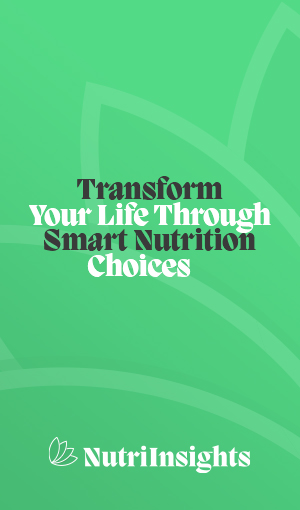
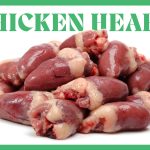
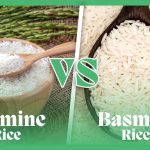
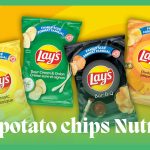
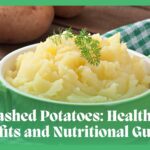
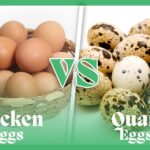
Great article post Cool